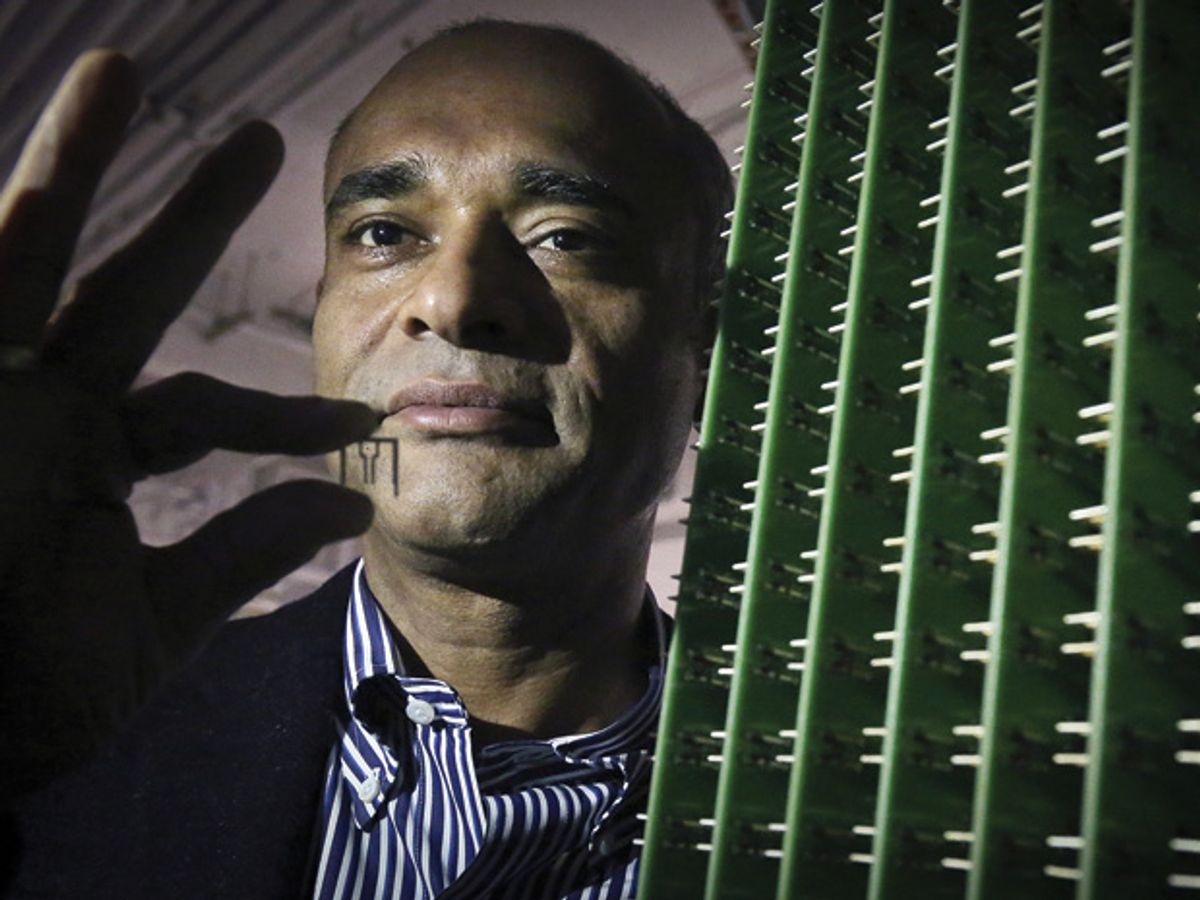Few start-up founders dream of going to court. But Chet Kanojia had a feeling that's where he was headed. When it came time to launch his TV streaming service Aereo, Kanojia says he and his New York City–based team spent about six months explaining the technology to media executives. They'd hoped to find broadcast industry partners. But, he says, “the industry doesn't work that way. The industry first litigates, then tries to go to Congress, and then when all fails, then they actually do business." So he wasn't surprised when, within a month of Aereo's February 2012 debut in New York City, a consortium that included major U.S. broadcasters such as ABC, CBS, NBC, and Fox filed suit, alleging that Aereo was redistributing copyrighted material.
Kanojia might be more inclined to take on large, multibillion-dollar media conglomerates than most. He's seen firsthand how fast changes in media consumption can happen. It was only in the mid-1980s, when he was a teenager living in Bhopal, India, that his family got a color TV, which picked up just a few hours of programming per day. But by the early '90s, they were watching cable television.
Bhopal is perhaps best known for the Union Carbide disaster there in 1984: Kanojia was pulled out of school to help swap out oxygen tanks for those poisoned by gas. After earning a bachelor's in mechanical engineering nearby at the National Institute of Technology, he completed a master's in computer systems engineering at Boston's Northeastern University. Eager to join the business world, he abandoned his Ph.D. program to join a small product development firm in Massachusetts, before going on to found his first company, Navic Networks, in 2000.
Navic, which was acquired by Microsoft in 2008, aimed to help cable television companies make the most of the data their set-top boxes collected for purposes such as spectrum planning and targeted advertising. It provided the seed of inspiration for Aereo.
“We were watching all of the data, and it was sort of obvious to us that there was a huge imbalance," he says. People pay for bundles that contain hundreds of channels, he says, “but they typically only watch seven or eight of them." Some 50 percent of the time, he says, cable viewers are watching network television, which is broadcast free of charge. And as for the other 50 percent of the time, with the rise of online video services such as Netflix and iTunes, “there's absolutely no use for that bajillion-channel universe," says Kanojia.
Aereo's approach is simple: Pick up free television signals over the airwaves and send them to a cloud-based DVR that can store video and stream it to computers, phones, and tablets—for a fee. The signals are picked up by tiny, tunable copper antennas—each about the size of a postage stamp—which are slotted by the thousands into modular racks. Customers can rent one of those antennas for US $8 a month.
Because each customer rents his or her own antenna, the company argues, the process does not conflict with laws that regulate rebroadcasting (and which ensure that broadcast networks get hefty fees from cable companies for the right to transmit network programs to cable subscribers). For the moment, the courts are in agreement. Aereo won the initial lawsuit brought against the company by broadcasters as well as an appeal in April and is in the process of expanding to dozens of other U.S. cities. But the battle will now go to the U.S. Supreme Court.
Is Kanojia afraid he'll be branded as the man who killed the Disney Channel, or other cable- and satellite-only channels? Perhaps not Disney, he says, but “the man who killed the bundle? Sure, I hope."
This article originally appeared in print as “Chet Kanojia."
